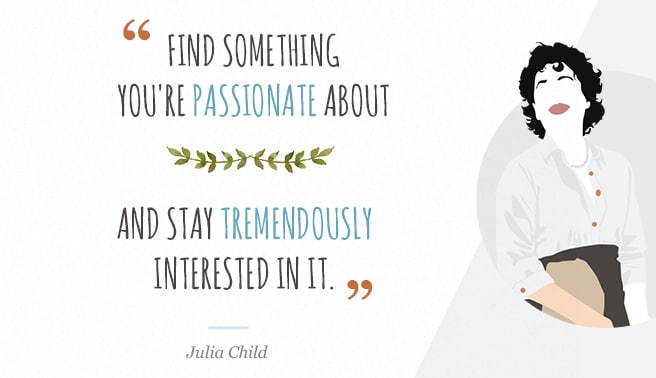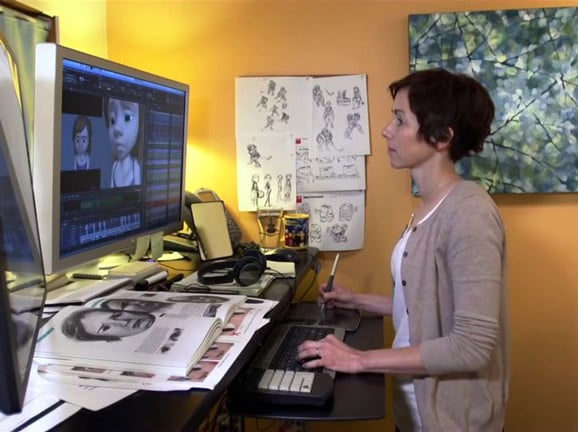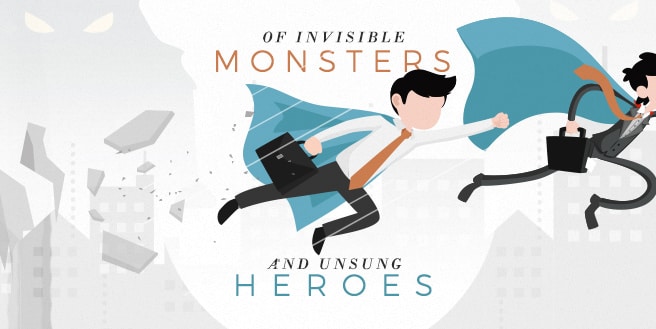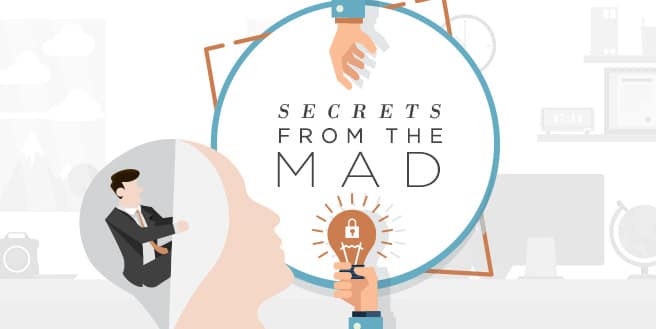Sales Rain Seals Deal with Australian Company

An Australian firm closes a new deal with Sales Rain. Read more

An Australian firm closes a new deal with Sales Rain. Read more
More often than not, whenever we see a colleague or office mate slouching in their chairs, immersed in a video game on their phone, we’d say that they’re wasting their time. We’d say that maybe they should stop slacking off and start working. Executives and managers would assume that games simply disrupt work. However, psychologists – and gamers themselves – would say otherwise. Contrary to popular belief, games help employees get through an entire workday.
Science says that games bring so much more to the table than just fun and amusement. They help relieve stress throughout the day and allows people to feel more in control of what they’re doing. And though having strategic game rooms in the office may seem too taboo for the companies that have been around for a while, there are a handful of organizations that have allowed their employees to have some play time. One of them being, Facebook, who has their own video game rooms. Tech solution company, Infosys, also created their own version of game room by having a bowling alley in their headquarters. Moreover, plenty of coworking spaces also offer varieties of games for de-stressing.
Though there is limited amount of research regarding the link between workplace successes and playing different variations of games, those who already experienced having game rooms at work, have said that the effects are pretty immediate.
Organizations like Facebook, Google, Skype as well as LinkedIn have already embraced the idea that all work and no play results to a bored and disengaged employee. They all believe that allowing fun into your office has its perks. Playing games has been proven to reduce stress levels by relieving pressure; as well as producing Endorphins and Serotonins, all of which leads to competence and increased productivity. And it doesn’t have to be a full-fledged game room. You can have a single pool table or Foosball and still create a fun environment that encourages employees to relax every now and then.
It also allows for creativity to flow and stimulate the mind and it gives us the time to reset after dealing with complicated tasks. Moreover, engaged plays open new neural connections in our brain allowing for an increase in innovative ideas. And with new research showing that living a sedentary lifestyle can put you at great risk, it’s another way to lessen the time spent sitting down. Games that allows you to move around throughout the day can help lessen the risk of early death. Lastly, it opens a new avenue for team work to be enhanced. It can accelerate bonding and encourages connectivity between members.
Each variety of games have their different functions. Strategically choose which game you’d want to offer to your employees and start having fun.
For those who want to improve productivity and increase speed of decision-making, you might want to install your very first ping-pong table. A game of table tennis gets our blood pumping, improves and preserves mental ability. In addition to this, it enhances strategy and long term memory.
All the while, pool tables are good for unwinding after a long day. It helps fight ageing process, improves hand-eye coordination as well as cognitive skills. You can try having head-to-head or team games to end the day on a positive way.
Foosball and air hockey tables refreshes the mind and body, encourages team work and helps employees view problems in new ways. Friendly matches throughout the day to relieve stress.
Establishing the perfect work environment isn’t easy, and so is finding ways to keep your team motivated and engaged. But if one thing is for sure, it’s that work doesn’t have to be a chore. Find the right balance between fun and work, the happier we all will be. Ready to give playing games a chance? Well, why don’t we set up a playdate! Sounds good?
How often do you sit down in the office? Do you ever do any sort of work while standing upright?
Most of us today doesn’t know how to answer the following question. We leave our houses to go to work and end up sitting down most of our commute. We arrive there, take a seat in our desks and start working. The only time that we spend walking or at the very least, standing, is when we go for a break. If there’s one thing that we do more than anything else in the office, it’s sitting down. In fact, an average of 9.3 hours of our day is spent stuck in chairs; quite a large number compared to the 7.7 hours of sleep that we get. It’s an activity embedded in our daily life deep enough that we barely question how much we’re doing it.
A Harvard Business Review article released last January 2013 called sitting the smoking of this generation, further elaborating that we need to get up and start moving if we want to keep ourselves healthy.
There are several health drawbacks to spending endless hours sitting down and it affects everyone, even those who are maintaining exercise routines. A recent study based on nearly 8,000 adults have said that there is a significant connection between risk of early mortality and time spent sitting. Those who sat for less than 30 minutes had lower risks of early death compared to those who spent more down time. In addition to this, the moment we sit down several functions in our bodies are easily affected. Electrical activity in our leg muscles shut off, the time we take to burn calories drop down by 1 minute and the enzymes in our body that burn fat drops down by 90 percent. The aforementioned study also reported that those who sit 3 hours or more per day watching TV are 64 percent more likely to die from heart disease.
Experts says that for every 30 consecutive minutes of sitting, there should be an allotted five minutes for you stand up and walk around at a brisk pace to reduce its health risks. Moreover, moving around also helps in increasing productivity and allows you to focus to the task at hand.
Author of the HBR article from earlier, Nilofer Merchant, also discussed how she turned her usual coffee meeting to a walking-meeting. She said that after almost a hundred of walking-meeting, she surprisingly noticed other benefits. Walking also helps fight off dementia and Alzheimer’s according to a research by US neurologists. Paying attention to posture is also important. Take the extra step by making sure that you avoid slouching or hunching over the computer during your work hours. Studies have shown that poor posture when working increases feelings of depression and cuts off circulation.
In addition to this, there are certain things that we can do to convert our offices into healthy workplaces. Standing desks can be found in a handful of offices around the world, from communal offices like coworking spaces and even private offices. If allowed, switch to a standing desk every now and then. Look for a setup that allows you to adjust your workstation and gives room for a chair to be used when needed.
The activity of sitting is pretty unavoidable taking into account the nature of our respective lifestyles. Still, health should be a priority no matter how tedious it seems to be. And in any case that you have other ideas to lessen the time spent on couches and chairs, we’d love to hear it. Also, we’ll be more than willing to help you should there be a need for a healthier workplace.
Dear Employee of the Year,
Hey, I think it’s time to take a break. I’m serious. You’ve been sitting there, staring at your screen for the past 5 hours. Don’t you want to go out for some fresh air? Or why don’t we stretch our limbs for a while?
No? Well, I tried. What else can I expect from a workaholic? I probably shouldn’t have asked. But hey, I get it.
We want to get as many tasks done within our 9-to-5 shift. We want to have enough energy for other important matters in our life. We try to juggle a lot of things all at once. We want to stay focused every waking minute so that we can perform better.
The internet have helped us get work done easier. We can now send important emails anywhere we may be. Heck, we can participate in a meeting even if we’re still in the comforts of our bedrooms at home. At the same time, the internet ruined the concept of time, of creating a separation between time spent for work and time spent for other pressing matters in our life. We bring work anywhere we go. We’ve become walking bodies glued to their mobile phones and tablets. We eat emails for breakfast and have proposals for dinner. The internet somehow did the opposite of things for us. I mean you surely worked even more than before right?
Props to you Mr.and Ms. Workaholic, in all honesty. You deserve the title employee of the year. So I guess, it’s only fair – if not, it’s actually right – for you to take a break.
And, I mean an actual break. You know, one where you switch off everything the moment you step outside the premises of your office. No more emails or work-related phone calls. Be present with those around you. Listen to your family as they tell you about their day during dinner. Your smart brain feeds off of information and though nothing’s really wrong with that, it gets toxic when we fire ourselves up resulting to even more physical and emotional exhaustion.
It’s tough. I can only imagine how hard it is to break a habit but this is the only way for you to have an actual restful break. And believe it or not, uninterrupted breaks are actually essential to creative and critical thinking. If that doesn’t work then why not try this technique a friend of mine uses. It’s called the Pomodoro Technique. It’s all about setting time blocks per task. You have 25 minutes to fully concentrate on the task at hand. After doing so, you have a 5 minute break that allows you to do whatever it is you want. Grab a cup of coffee or maybe go for a walk. It actually works. You see, with this technique, we can fully immerse ourselves to either working or playing. It helps your bright little brain stay sharp by avoiding switching tasks.
And you know what else you can do so that you actually make the most out of your breaks? Why not try repurposing your workspace? We have the ability to shape the space that surrounds us in the same way that it shapes us. Changes are constantly being applied in numerous workspaces. The advance technology have made working different for us. And with the emergence of digital nomads or that guy we barely see come in, offices are being designed to encourage concentration and short breaks.
I mean have you seen the coworking spaces around here? They’re multiplying and for a good reason. They give their members plentiful of freedom to value short breaks. Plus, you should see all the different workspaces that you can use. Please, don’t mistake this as some sort of a workaholic-intervention whatsoever. You are entitled to choose whether you’ll listen to me or not. All I want to do is to remind you that you are more than your work. You deserve a sufficient amount of rest.
Yours truly,
Last Year’s Employee of the Year
Julia Child was an American woman married to a French diplomat who wanted to be so much more than just a wife yet was unsure of what she wanted to do. While Julie Powell is a 29 year old woman stuck in a cubicle with a run-down-the-mill job who felt lost.
The difference between them seemed non-existent at first, but Julia Child published her cookbook entitled The Art of French Cooking in the USA during the year 1961 all the while Julie Powell started her blog entitled the Julie/Julia Project in 2002.
With years separating these two ladies, no one would’ve thought that passion and cooking will create a connection between them.
Julie and Julia is a 2009 movie that combined the success stories of two different American woman and the life lessons that they have conveyed to women everywhere.
Julia Child’s passion for French food led her to enroll into the famous all male French cooking school Le Cordon Bleu at the age of 30. And despite the doubts her fellow students have thrown at her, she managed to be a chef. 7 years later, she published a cook book entitled The Art of French Cooking in collaboration with Simone Beck and Louisette Berthole. Years later, her cookbook inspires frustrated writer Julie Powell to start a blog of her own entitled Julie/Julia Project wherein she tries to cook all 524 recipes within one year. She continues her day job at a development corporation as she blogs. Writer and director, Nora Ephron, combined Julia Child’s autobiography entitled My Life In France and Julie Powell’s blog into a movie about chasing after your dream.
 Though set in different times, both stories of Julie and Julia relates to a handful members of the workforce and conveys meaningful life lessons that are worth sharing to the world.
Though set in different times, both stories of Julie and Julia relates to a handful members of the workforce and conveys meaningful life lessons that are worth sharing to the world.
Despite of Julia’s age, she continued to search for her life’s passion and didn’t care if most of her friends are already ahead of her. The movie starts in France where she continues her career exploration after having worked as an advertising copywriter and serving the government. She gives hat-making a try since she liked wearing hats yet it simply wasn’t for her. And instead of criticizing herself, she tries playing cards – turns out, it’s still not her thing. She finally moves to cooking and alas, she finally makes a connection with something she enjoys doing.
Julia Child’s road to cooking inspires us to go through our own pace and stop berating ourselves if we haven’t found our true life’s passion. Her career exploration wasn’t a waste of time, she didn’t mind learning and experiment on what she liked and didn’t like. She knew that it was her own pace of discovery and growth – a concept that we can hopefully try in the future.
Julie Powell went through a similar dilemma as well. As she worked herself away in her small cubicle, she saw her friends’ careers take off while she remained in her small apartment and mediocre job. She felt unhappy and lost. She was drowning in self-doubt when Julia Child’s cookbook pulled her out.
She starts a blog entitled Julie/Julia Project wherein she tries to cook all 524 recipes found in The Art of French Cooking within a year. And though she struggled to complete all recipes all the while maintaining her day job, she pulled through. In addition to this, writing also helped Julie rediscover herself. Through it, she confronted aspects of herself that she hated, like her recurring mental breakdowns and how she takes his husband for granted. Immediately, she tries to resolve this issues within herself. Julie Powell’s unwavering determination is proof that commitment pays off. She took personal responsibility of her success and treated her failures as temporary setbacks.
The ability to make a living out of what brings you joy is an opportunity not a lot of people can have but these two women are proof that maybe it’s not too late to chase after what you want. Today’s workforce continues to challenge the traditions we have had in order to have a healthier career life. Flexible workspaces and working hours allow professionals to have enough time to pick up a new hobby or learn a new skill that they’ve been eyeing for a while now.
In her book, Julie says
“Julia taught me what it takes to find your way in the world. It’s not what I thought it was. I thought it was all about-I don’t know, confidence or will or luck. Those are all some good things to have, no question. But there’s something else, something that these things grow out of. It’s joy.”
2016 was the year the rest of the world gave the center stage to employee engagement. Improving and redefining the overall happiness of the workforce have been the talk of the town. The industry has redefined the standard workplace environment, conducted numerous surveys to get an idea on how to proactively solve this issue.
And much to our delight, researchers have recorded great results. According to a 2016 survey on Employee Job Satisfaction and Engagement by the Society of Human Resource Management, eighty-eight percent of US employees are satisfied with their respective jobs, with thirty-seven percent claiming that they are very satisfied and fifty-one percent reporting that they are somewhat satisfied. These reports mark the highest level of employee satisfaction over the last 10 years.
The aforementioned study also notes that these employees are only contented to a certain extent, signifying that there’s still room for improvement. And with the economy staying relatively stable over the past year, companies are finding new ways to create better incentives and perks for their employees.
Companies and organizations alike have come up with different strategies to increase the overall happiness of their employees. Some have allowed for flexible work schedules and have offered some of their workers the option to work from home. All the while, some companies have instilled a more casual dress code in their office. Some have even tried redesigning their whole office.
Though tedious and not to mention, quite expensive, experts believe that designing offices that can maximize employee happiness is an alternate strategy that organizations can use.
Teknion, an American design company, released a research paper discussing the complex connection between humanity and environment health. Entitled Ethonomics: Designing For The Principles Of The Modern Workplace, the 2016 paper highlights the potential of workplaces to be reinvented into spaces that bring happiness and overall satisfaction to those who utilize it.
Its authors believe that companies should use different approaches in design to create places that are sustainable and healthy – office spaces that inspire people and make them feel good about what they’re doing as well as where they are.
Design expert Joan Blumenfeld, a contributor of the said paper, says that happy workplaces should have the ability to flex and provide to its workers a variety of space options that promote movement through the day. Bluemenfeld futher explains that though several companies are doing a great job in incorporating the aforementioned elements into their respective offices, this holistic idea should be recognized by everyone.
Ethonomics argue that in order to create an infrastructure for happy workplaces, it needs to have room for movement.
Until recently, humans heavily relied on their ability to move in order for them to survive. And so, it’s only right to optimize a workspace for a species that is biologically engineered to be in motion.
The authors suggests providing opportunities for physical activity because despite of our efforts to care about our wellness, our jobs and technology have glued us to a seating position. According to them, alert and engaged workers are those who have stimulating work environment that encourages them to stand and walk around. They further elaborated the importance of movement by highlighting that we are more alert after taking a walk – this feeling of well-being affects the way we interact with those around us, greatly.
The paper also suggests incorporating natural elements to your workplace. Research have said that “being within green space” can help reduce mental stress. In addition to this, they suggest integrating a mix of open and enclosed spaces as well as taking color and texture into consideration.
“Without hard work, nothing grows but weeds”
Ever since we were young, we were told that hard work is the price of success. Our parents told us that nothing good comes easy. Our teachers reiterated the same thing, study hard and earn good grades. Though there’s no denying the legitimacy of what hard work can bring, none of us can dismiss the fact that work is predominantly taking over humanity, leaving no room for other things that matter to a happy and healthy life.
An overworked labor force is an epidemic happening all around the world. From countries like Mexico, Costa Rica to Korea. Another major culprit is United States, with an average workweek of 46.7 hours, meaning that a person who leaves their home at 8 a.m., won’t leave their office until 6 p.m., a whole entire day dedicated to work and sleep, nothing else. And it seems that overworked employees from the Philippines have also reached epidemic proportions.
The Philippine Statistics Association (PSA) reported a 41% increase in the number of overworked employees since the year 1995. By the year 2015, almost 8.1 million people are now working for more than 48 hours in a week. The aforementioned report also noted that having more than the usual hours of work can interfere with the balance of personal life and work. It can also increase injury hazard risks, signal inadequate pay and can pose a long term threat to a worker’s mental health.
A Harvard Business Review article on how long working day hours can actually backfire discussed whether overworking actually works or not. In a study conducted by a Boston University Business Professor, managers could not differentiate the output of those who actually worked 80 hours a week and those who only pretended to do so. The professor found no significant evidence to prove whether overworked employees accomplished more and employees who only pretended to work accomplished less.
The aforementioned article also discussed that overworking results affects the company as well. Numerous studies around the world have reported various health issues due to stress, usually involving impaired sleep and memory, diabetes, depression and even heart disease. These health issues are already bad alone but it’s also appalling to the company with the rising health insurance costs. In foresight, overwork is terrible for both parties.
In summary, overwork diminishes our capability to progressively work on tasks that matter.
Last March, Senator Grace Poe filed Senate Resolution No. 316 asking to propose legislative measure to the rising number of overworked Filipinos.
The senator cited the aforementioned PSA report, further elaborating on the matter by citing that during the year 2015, around 8.845 million employed Filipinos are working excessive hours per week – with an overall 4.5 percent increase from the 8.467 million count from the year 2005. She then proposed a review of company policies that require employees to work long hours, an examination of labor laws and passage of legislative acts that can ensure humane work conditions for Filipinos.
The working day call for help have become a global phenomenon as well. All over the world, professionals are asking for flexible work hours that allows them to have more control over their time. More and more young entrepreneurs and startups are opting remote working, revoking traditional ideologies of the 9-to-5 work day. Flexible workspaces have also emerged like coworking spaces to give workers freedom to dedicate their time to more important matters like family and loved ones.

We stood by Woody and his friends as Andy grew. We helped Marlin and Dory swim to Sydney in search of Nemo, only to help them again – Marlin and Nemo, in this case – as they looked for Dory. We had our hearts broken as we witnessed Sully and Mike say goodbye to their little human, Boo.
For most of our childhood, Pixar told us stories about friendship and family. They taught us the power of pure imagination. Their technological breakthrough in computer animation and art in general made our younger years even more special.
Contrary to popular belief, their success did not come from a single idea but is rather the result of fresh ideas put together by a group of talented individuals and their collective creativity. Co-founder, Ed Catmull, discussed the workplace culture of Pixar in an article published last September 2008 in Harvard Business Review.

CGI making of 2015 Pixar animation movie Inside Out.
With an industry that demands new and fresh content, originality is valued. Several movie businesses choose to reproduce the success of other movies, tweaking specific details to make their own rehashed materials, instead of creating new concepts. He says that the natural instinct of executives to minimize risks hinders unique ideas from coming to life – a trait he and the rest of the company inherently avoids.
He adds that their success wasn’t pure luck, it was the result of their undaunted behavior towards failure and their ability to manage recovery from such defeat. He also discussed the importance of community, further explaining that creating an environment that fosters trusting relationship among talented people and releases everyone’s collective creativity engenders a vibrant community within the workplace.
Pixar’s philosophy is that they look for talented people, bet on the ideas they generate, give them freedom, as well as provide an environment that encourages honest feedback. Catmull shares that they setup teams to generate ideas that has potential to become great films and assess whether the relationship among them is healthy, as well as whether they are making progress or not. And whenever issues arise, they provide every possible support they can give without compromising their authority. Moreover, Pixar takes pride in the community they’ve created. The people from all levels of their studio support one another. They openly help each other to ensure high quality output. “It’s one for all, all for one” for him and the rest of the company.

Check out Pixar’s animation process guide here.
Catmull shares that Walt Disney believed in the ability of companies who invest in reinvention and the combination of technology and art to create magic. Chief Creative Officer John Lasseter even coined the saying “Technology inspires art and art challenges the technology” – a way of life that Pixar has established and continues to reinforce by giving everyone the liberty to communicate with anyone and developing a workplace environment wherein everyone is safe to express their ideas.
Ed and the rest of his team nurtured a culture that encourages learning, growth, creative freedom and innovation, all of which reinforced a more humanized way of working and supported collective creativity. The norm that Pixar have established inspired millions of executives to move towards a new workplace environment that can greatly benefit both companies and employees by adhering to certain principles or by revamping their physical offices. Employees themselves have invested in the said culture by trying out coworking spaces or shared office spaces.
The approaches Ed strengthened changed the way Pixar made animated films and gave more depth to workspace culture – spreading their magic to the world.

Would anyone believe you if you say that there are invisible monsters hidden behind success? No, not the kind of monsters that are hungry for wealth or market shares. But the one that has an unending appetite for destroying everything you’ve worked hard on anytime it pleases. The kind of monsters that feed off of a person’s self-esteem and sanity.
How can we believe in something we can’t see? How do you fight something you can’t touch? Just imagine, a hero fighting an invisible war against an intangible monster.
It’s the reality some entrepreneurs have to face. Conquering war after war of isolation and emptiness, telling their selves to live for another day – to breathe and breathe until the violence in their heads have subsided. If they’re lucky, they reach success without suffering mind wars. If not, every step they take towards their goal, is one step closer to darkness.
We know entrepreneurs to be brilliant individuals, they create new jobs and prosperity, introduce services and products that improve our daily lives and even help economies grow. And it only makes sense that most of us assume that all of them are living the dream. Yet unbeknownst to us is a dark side startups have – one that they are most likely familiar with.
In a 2015 study conducted by UCSF clinical professor Dr. Michael Freeman, he linked high rates of mental issues to entrepreneurship. Surveying 242 entrepreneurs, 49% of them reported having a mental-health condition. Depression was present in 30% of all the participants and is also the number one reported condition, shortly followed by ADHD and anxiety problems. Another study suggests that authority can be linked to depression, and that entrepreneurs or CEOs may be depressed more than double the rate of the general masses. Popular articles have also claimed that success comes with numerous strings to them and can possibly pull a person down.
The quiet war between startups and depression have been going around for so long that they’ve already lost several members of their community. It’s a war that no one sees or no one talk about.
The problem isn’t new, according to experts. It was something that successful people struggle with for most of their adult life. Yet at the same time, it is something they continue to fail to talk about. Afraid that it will be taken as a sign of their weakness, entrepreneurs hide their pain away – only for things to go for the worse in the long run. Running a business itself can be quite a stressor to a person’s emotional well-being. The risk of failure is too high to ignore. Moreover, Harvard Business School lecturer Shikhar Ghosh have said in a study that three out of four startups fail. Hence, they are exposed to traumatic events along the way. And with habits such as eating too much or too little as well as lack of sleep and physical exercise, it’s not much of a surprise that entrepreneurs are more susceptible to anxiety and despair than most people.
Research have also said that the innate character traits many entrepreneurs share make them vulnerable to strong emotional states. And though psychological makeup differs from one person to another, significant setbacks in the business can knock anyone to the ground. Numerous successful people in history have gone through a silent battle against the incapacitating depression in their heads. Throughout this unending war, there are some who have won and sadly, there are those who lost.
At the same time, there are still those who continue to fight on a daily basis. They inhabit their own little ways of keeping their selves in check. They make more time for themselves and their loved ones by acquiring Coworking Spaces membership. Instead of staying in one dull office, they move around these communal areas to interact and for creativity to flow. More importantly, they try to admit their vulnerability to those around them. Though it may be hard, they strive to be more emotionally honest and connect deeply with their family and friends. In addition to this is gathering up the courage to ask for help.
These invisible monsters lurking in the day do not pick their victims by wealth or social status. That being said, all around us are hundreds of unsung heroes going through their own battles silently asking for help.
Give them a hand and be a little nicer to everyone. Any amount of kindness can lead to someone’s happiness.

Among a sea of dreamers and wayfarers, there are lucky ones who watched their childhood hopes come true. Some became doctors, while some became lawyers. There are those who became musicians and those who became artists.
Then there are those who had to give their hopes away – the wishful thinking that someday they’ll get to do something that they love for a living. For their safety, for the sake of their families, for survival.
Sacrificing what they love and settling for something they don’t exactly admire can be torturing. Just imagine what it must have felt to be in a virulent environment from 9 to 5.
It makes every step heavy, every move inching towards madness. They want to walk away but the world says no because quitting is not an option. ‘Not right now’ they’d say ‘there’s too much at stake’ the world would reply.
And so day by day they live through it, through all the gossip, petty drama and politics. The mad ones inhabited their own little ways – little secrets – of making each day better than before, chanting “one more day, one more day”.
They’d alter their mindset and use different techniques and meditations to lessen the weight of desolation. Every single day, they look for something positive; anything really, so long as it gives them another reason to stay. They try to laugh their worries away with coworkers and friends, focusing their minds into this tiny speck of sunshine and hope it’ll help them hold on for just one more minute.
Plugging their headphones on, they tune out the rest of the world and keep themselves focused to avoid getting side tracked by all the negativity surrounding them. They create boundaries and barriers between personal matters and work, hoping it won’t add more harm to their already miserable life.
They avoid insignificant gossip and drama, reminding themselves that they’re a full grown adult and are no longer in high school, participating in petty office drama won’t do any good. Any remark about their work will be regarded as constructive criticism and they try their best not to take any negative annotation into heart.
They create their own little bubble by customizing their cubicles with little trinkets and photos of those they love. They remind themselves that there’s more to this draining job by adding post-it notes with motivational quotes on your desk and computer screen.
When things get a little too overwhelming, they take a little break and go for a refreshing walk. They search for new inspiration or anything that can recharge them for the rest of the day.
They strive to stay true to their selves amidst all the pessimism, promising their selves that they will never take part in the unending cycle of despair.
Still, even the mad ones who manage to stay true to all these secrets, break. Sometimes things get too much and they walk away.
Some look for new jobs in traditional offices while some decide to abandon the mediocre corporate job and actually do something they love. Those who choose a new kind of profession find solace in coworking spaces, the kind of office that fosters positivity, creativity and passion. These workplaces give home to those who finally had enough of the toxic environment from their past jobs.
And before you leave, here’s another secret from the mad; no job is worth losing your sanity over.
Give your childhood dreams another try and become part of a community that strives to encourage its members to become better people.
